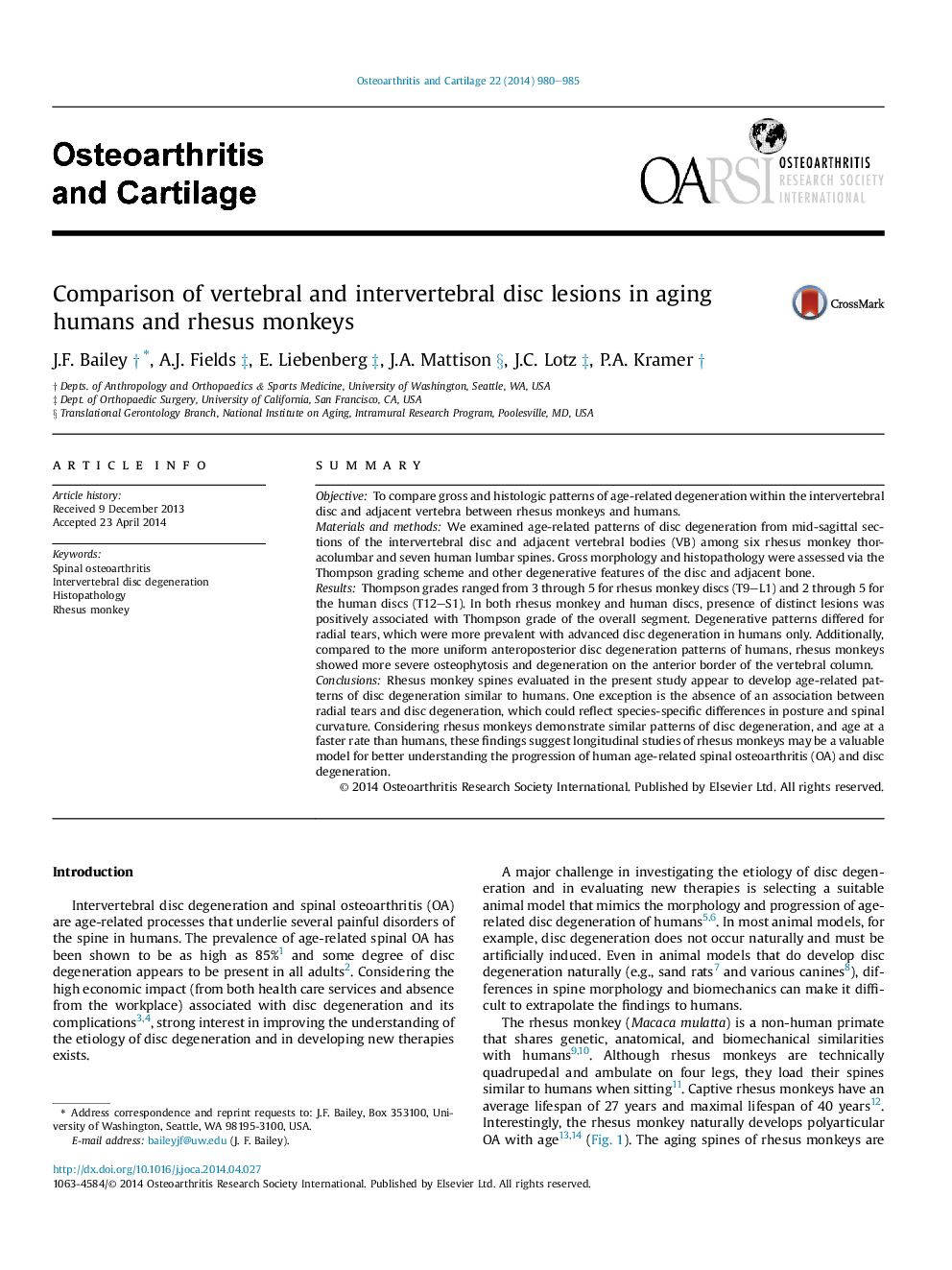| Article ID | Journal | Published Year | Pages | File Type |
|---|---|---|---|---|
| 3379377 | Osteoarthritis and Cartilage | 2014 | 6 Pages |
SummaryObjectiveTo compare gross and histologic patterns of age-related degeneration within the intervertebral disc and adjacent vertebra between rhesus monkeys and humans.Materials and methodsWe examined age-related patterns of disc degeneration from mid-sagittal sections of the intervertebral disc and adjacent vertebral bodies (VB) among six rhesus monkey thoracolumbar and seven human lumbar spines. Gross morphology and histopathology were assessed via the Thompson grading scheme and other degenerative features of the disc and adjacent bone.ResultsThompson grades ranged from 3 through 5 for rhesus monkey discs (T9–L1) and 2 through 5 for the human discs (T12–S1). In both rhesus monkey and human discs, presence of distinct lesions was positively associated with Thompson grade of the overall segment. Degenerative patterns differed for radial tears, which were more prevalent with advanced disc degeneration in humans only. Additionally, compared to the more uniform anteroposterior disc degeneration patterns of humans, rhesus monkeys showed more severe osteophytosis and degeneration on the anterior border of the vertebral column.ConclusionsRhesus monkey spines evaluated in the present study appear to develop age-related patterns of disc degeneration similar to humans. One exception is the absence of an association between radial tears and disc degeneration, which could reflect species-specific differences in posture and spinal curvature. Considering rhesus monkeys demonstrate similar patterns of disc degeneration, and age at a faster rate than humans, these findings suggest longitudinal studies of rhesus monkeys may be a valuable model for better understanding the progression of human age-related spinal osteoarthritis (OA) and disc degeneration.
